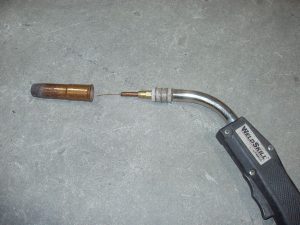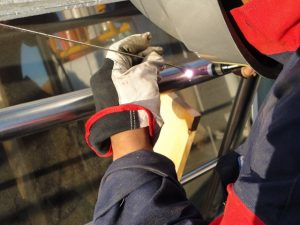The History of Welding
Welding is a method of repairing or creating metal structures by joining the pieces of metals or plastic through various fusion processes. Generally, heat is used to weld the materials. Welding equipments can utilize open flames, electric arc or laser light.
The History of Welding from the Middle Ages
The earliest evidence of welding can be traced back to the Bronze Age. The earliest examples of welding are welded gold boxes belonging to the Bronze Age. The Egyptians also learnt the art of welding. Several of their iron tools were made by welding. During the Middle Ages, a set of specialized workmen called blacksmiths came to the fore. Blacksmiths of the Middle Ages welded various types of iron tools by hammering. The welding methods remained more or less unchanged until the dawn of the 19th century.
1800
In the 19th century, major breakthroughs in welding were made. The use of open flames (acetylene) was an important milestone in the history of welding since open flames allowed the manufacture of intricate metal tools and equipments. Englishman Edmund Davy discovered acetylene in 1836 and acetylene was soon utilized by the welding industry. In 1800, Sir Humphrey Davy invented a battery operated tool which could produce an arc between carbon electrodes. This tool was extensively used in welding metals.
1880
In 1881, French scientist Auguste De Meritens succeeded in fusing lead plates by using the heat generated from an arc. Later, Russian scientist Nikolai N. Benardos and his compatriot Stanislaus Olszewski developed an electrode holder for which they secured US and British patents.
1890
During the 1890’s, one of the most popular welding methods was carbon arc welding. Around the same time, American C.L. Coffin secured a US patent for metal electrode arc welding. N.G. Slavianoff of Russia used the same principle for casting metals in molds.
1900
Coated metal electrode was first introduced in 1900 by Strohmenger. A coating of lime helped the arc to be much more stable.
A number of other welding processes were developed during this period. Some of them included seam welding, spot welding, flash butt welding, and projection welding. Stick electrodes became a popular welding tool around this time as well.

1919
After the end of World War I, the American Welding Society was established by Comfort Avery Adams. The aim of the society was the advancement of welding processes. CJ Holstag also invented the alternating current in 1919. However, alternating current was first commercially utilized by the welding industry only in the 1930’s.
1920
Automatic welding was first introduced in 1920. Invented by P.O. Nobel, automatic welding integrated the use of arc voltage and bare electrode wires. It was used for repairing and molding metals. Several types of electrodes were also developed during this decade.

1930
The New York Navy Yard developed stud welding. Stud welding was increasingly used for the construction industry and also for shipbuilding. It was during this time that the National Tube Company developed a welding process called smothered arc welding. In the sector of shipbuilding, the stud welding process was replaced by the more advanced submerged arc welding.
1940
A new type of welding for seamlessly welding aluminum and magnesium was developed in 1941 by Meredith. This patented process came to be known as Heliarc welding. The gas shielded metal arc welding or GTAW was another significant milestone in the history of welding which was developed in Battelle Memorial Institute in 1948.

1950
The CO2 welding process popularized by Lyubavskii and Novoshilov in 1953 became a welding process of choice for welding steels, as it was comparatively economical. Soon, electrode wires of smaller diameter were launched. This made welding of thin materials more convenient.
1960
There were several advancements in the welding industry during the 1960’s. Dualshield welding, Innershield, and Electroslag welding were some of the important welding developments of the decade. Plasma arc welding was also invented by Gage during this time. It was used for metal spraying. The French also developed electron beam welding, which is still used by the aircraft manufacturing industries of the United States.

Modern Welding History
Some of the recent developments in the welding industry include the friction welding process developed in Russia, and laser welding. Laser was originally developed in Bell Telephone Laboratories but it is now being used for various kinds of welding work. This is due to the inherent capacity of lasers in rendering precision to all kinds of welding jobs.
For additional information on welding, please visit the following links:
- Welding Overview: Provides an overview of the welding industry.
- Aluminum Welding: Offers a brief description of aluminum welding and its history.
- SMAW: Comprehensive information on Shielded Metal Arc Welding.
- History of Welding: Traces the history of welding.
- Welding Equipments: A look at the history of welding equipments.
- AWS: Official website of the American Welding Society.